Ancient Kuttamuwa Stele And Iron Age Belief That Soul Lived In Funerary Slab
A.Sutherland - AncientPages.com - Ancient cultures in human history have tried to honor and commemorate their dead.
An ancient Middle East tradition among prehistoric cultures in Mesopotamia, Egypt, Anatolia, and the Levant (Syria-Palestine) is also closely related to the relationship between the dead, people’s funerary customs and life in the eighth century B.C
Food, drink, offerings and stone effigies in maintaining a place for the dead in family life show how the living cared for the dead.
One such object that gives us insight into this tradition is the Kuttamuwa Stele, discovered in 2008 by University of Chicago archaeologists at Zincirli, Turkey, the site of the ancient city of Sam'al, which was once the capital of a prosperous kingdom, and now, an important Iron Age site under excavation.
The stele was found in a suburb of the walled city, probably in Kuttamuwa’s own house.
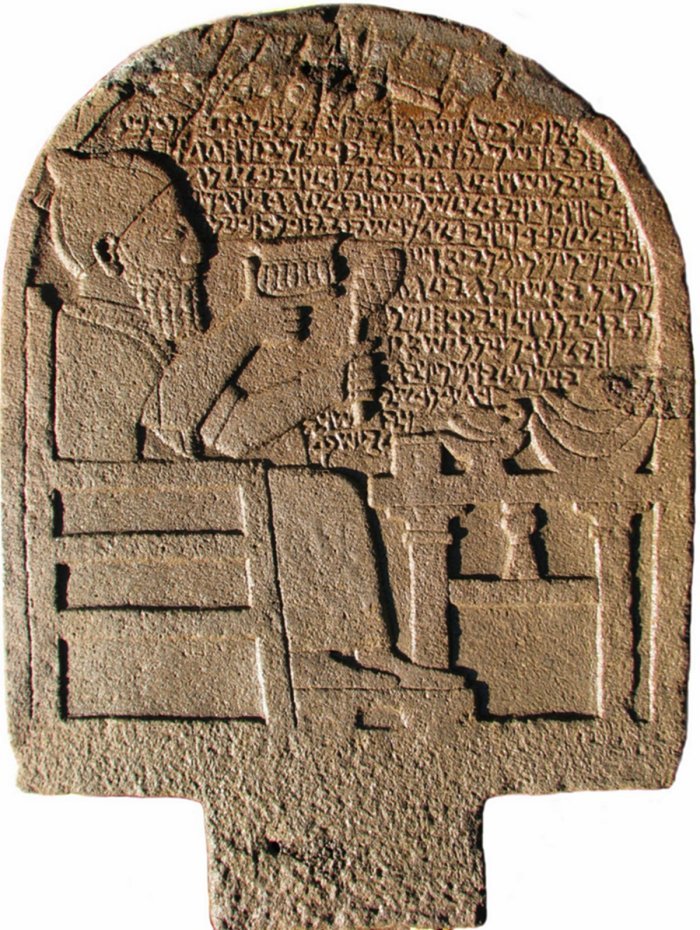
An inscription on a stone monument in Turkey from the eighth century B.C. indicated a belief that the body and soul were separate. Image credit University of Chicago
Kuttamuwa, an 8th-century BC royal official from Sam'al and a servant of King Panamuwa II (died ca. 733/732 BC) ordered this inscribed stele to be erected upon his death. The inscription requested that his mourners commemorate his life and his afterlife with feasts "for my soul that is in this stele".
“I, Kuttamuwa, servant of [the king] Panamuwa, am the one who oversaw the production of this stele for myself while still living. I placed it in an eternal chamber and established a feast at this chamber: a bull for [the god] Hadad, a ram for [the god] Shamash and a ram for my soul that is in this stele."
The Kuttamuwa Stele is an ancient memorial document of ancestor cult and beliefs about the soul, dated back to about 735 BC. It is also one of the earliest records that relate to a soul as an entity separated from the body.
The basalt stele that weighs 800 pounds and is three feet tall, is carved with an image of a man named Kuttamuwa seated before a table with offerings to the deceased and to local gods.
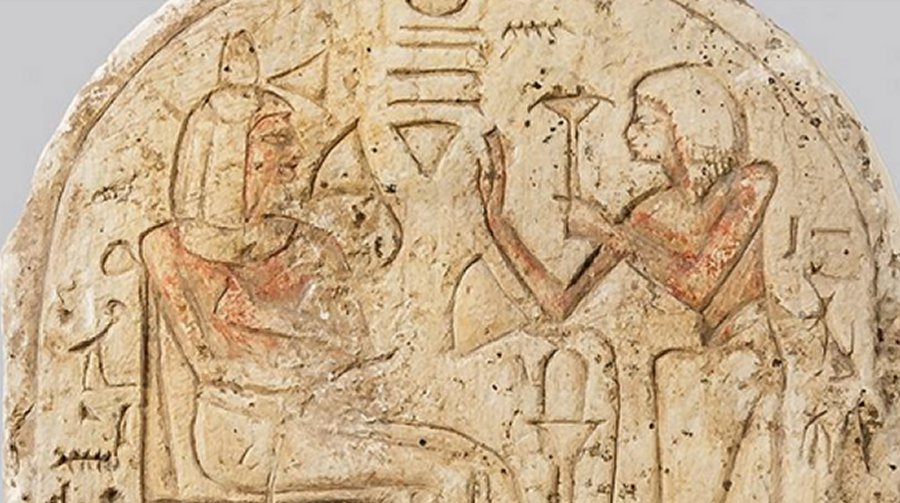
Stele showing a deceased man being attended by family members, part of an ancestor cult. Luxor, Egypt, ca. 1295-1069 BC. Image credit: Oriental Institute of the University of Chicago
It was believed that Kuttamuwa’s spirit inhabited this funerary slab and the words carved on the stele were the man’s last words. The stele confirms Iron Age beliefs about the afterlife and their belief that the soul separates from the body.
The monument is covered with the longest known memorial inscription of its type that revealed an unknown practice of enacting annual sacrifices for the soul of the deceased. According to the inscription, the soul of the deceased resided in the stele.
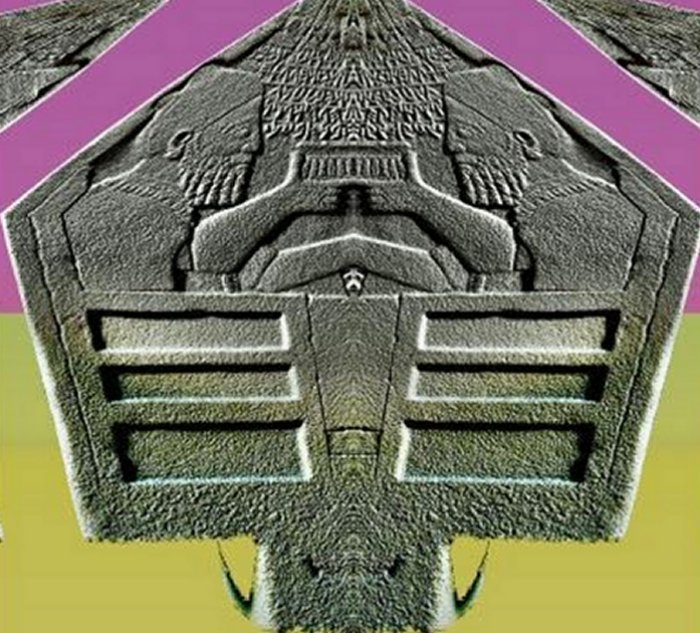
An ancient Middle East tradition among prehistoric cultures in Mesopotamia, Egypt, Anatolia, and the Levant (Syria-Palestine) is also closely related to the relationship between the dead, people’s funerary customs and life in the eighth century B.C
The script is derived from the Phoenician alphabet and a Semitic language that appears to be an archaic version of Aramaic, a language widely used in the Middle East at that time.
The biblical commandment to “Honor your father and your mother, that your days may be long” (Exodus 20:12), is rooted in the tradition expressed by the Kuttamuwa text, which also informs that the rituals took place not just at the grave or in the home, but in a special private mortuary chapel next door to a temple, where the Kuttamuwa stela was discovered.
Written by – A. Sutherland - AncientPages.com Senior Staff Writer
Copyright © AncientPages.com All rights reserved. This material may not be published, broadcast, rewritten or redistributed in whole or part without the express written permission of AncientPages.com
Expand for references
References:
Oriental Institute, The University of Chicago
Pardee, Dennis. "A New Aramaic Inscription from Zincirli." Bulletin of the American Schools of Oriental Research, no. 356 (2009): 51-71.
More From Ancient Pages
-
 Bulla Felix: Legendary Italian Leader Of Outlaws Who Robbed The Rich And Gave To The Poor
Featured Stories | Mar 23, 2023
Bulla Felix: Legendary Italian Leader Of Outlaws Who Robbed The Rich And Gave To The Poor
Featured Stories | Mar 23, 2023 -
 Mystery In The Stones: Rujm El-Hiri (Wheel Of Ghosts) Was Not An Ancient Observatory – So Why Was It Built? – New Study
Archaeology | Jan 2, 2025
Mystery In The Stones: Rujm El-Hiri (Wheel Of Ghosts) Was Not An Ancient Observatory – So Why Was It Built? – New Study
Archaeology | Jan 2, 2025 -
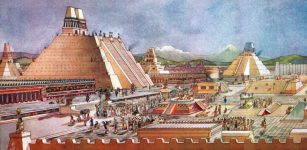 500-Hundred-Year-Old Mystery Of Aztecs’ Death May Have Been Solved – New Study
Archaeology | Jan 17, 2018
500-Hundred-Year-Old Mystery Of Aztecs’ Death May Have Been Solved – New Study
Archaeology | Jan 17, 2018 -
 How Did An Ancient Egyptian Sarcophagus End Up Abandoned On A Street In London?
Artifacts | Mar 22, 2023
How Did An Ancient Egyptian Sarcophagus End Up Abandoned On A Street In London?
Artifacts | Mar 22, 2023 -
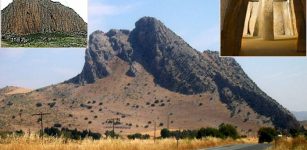 Mysterious Menga Dolmen: A New Very Old Monument Discovered
Archaeology | Sep 21, 2020
Mysterious Menga Dolmen: A New Very Old Monument Discovered
Archaeology | Sep 21, 2020 -
 Scribes: One Of The Noblest And Highly Recommended Professions In Ancient Egypt
Featured Stories | May 10, 2023
Scribes: One Of The Noblest And Highly Recommended Professions In Ancient Egypt
Featured Stories | May 10, 2023 -
 Ancient Mystery Of The Unidentified Strangely Dressed Man Found In Massachusetts And His Connection To Undeciphered Rock Carvings
Featured Stories | Sep 19, 2024
Ancient Mystery Of The Unidentified Strangely Dressed Man Found In Massachusetts And His Connection To Undeciphered Rock Carvings
Featured Stories | Sep 19, 2024 -
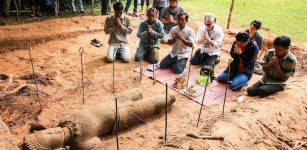 Large Statue Of Ancient Guardian Discovered At Angkor Wat
Archaeology | Aug 7, 2017
Large Statue Of Ancient Guardian Discovered At Angkor Wat
Archaeology | Aug 7, 2017 -
 Why Were These People Buried In A Remote, Unmarked Grave In New Hampshire In The Mid-1800s?
Archaeology | Nov 4, 2024
Why Were These People Buried In A Remote, Unmarked Grave In New Hampshire In The Mid-1800s?
Archaeology | Nov 4, 2024 -
 Unraveling The Mystery Of Ancient ‘False Doorways’
Ancient Mysteries | May 24, 2014
Unraveling The Mystery Of Ancient ‘False Doorways’
Ancient Mysteries | May 24, 2014 -
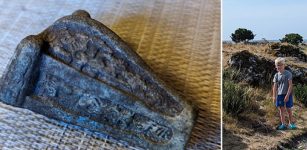 8-Year-Old Boy Finds Unusual Viking Age Artifact On Gotland Island, Sweden
Archaeology | Sep 18, 2023
8-Year-Old Boy Finds Unusual Viking Age Artifact On Gotland Island, Sweden
Archaeology | Sep 18, 2023 -
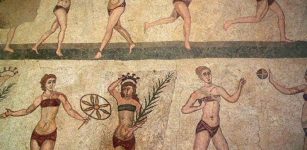 Ancient Roman Women Wore Bikini In 1400 B.C.
Ancient History Facts | Jul 17, 2017
Ancient Roman Women Wore Bikini In 1400 B.C.
Ancient History Facts | Jul 17, 2017 -
 Precious Lost Ancient Book Of Wisdom Could Solve Biblical Mysteries
Ancient Mysteries | Nov 26, 2018
Precious Lost Ancient Book Of Wisdom Could Solve Biblical Mysteries
Ancient Mysteries | Nov 26, 2018 -
 Ancient Quest For Mechanical Life: Humanoid Robots Of Our Ancestors
Ancient Technology | Apr 26, 2019
Ancient Quest For Mechanical Life: Humanoid Robots Of Our Ancestors
Ancient Technology | Apr 26, 2019 -
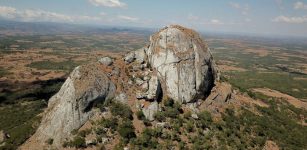 Ancient DNA Reveals Surprises About Life Of Early Africans
Archaeology | Feb 24, 2022
Ancient DNA Reveals Surprises About Life Of Early Africans
Archaeology | Feb 24, 2022 -
 Porobonus – Mysterious Unknown Pagan God
Artifacts | Aug 28, 2015
Porobonus – Mysterious Unknown Pagan God
Artifacts | Aug 28, 2015 -
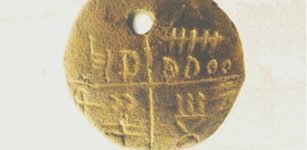 Controversial Tartaria Tablets: The First Writing System In The World?
Artifacts | Nov 13, 2014
Controversial Tartaria Tablets: The First Writing System In The World?
Artifacts | Nov 13, 2014 -
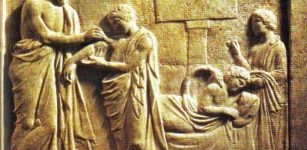 Why Was It Necessary For Great Physician Hippocrates To Eat Earwax?
Ancient History Facts | Aug 14, 2017
Why Was It Necessary For Great Physician Hippocrates To Eat Earwax?
Ancient History Facts | Aug 14, 2017 -
 Ancient Mystery Of The American Southwest – Secrets Of The Cliff Dwellers – Part 1
Ancient Mysteries | Jul 23, 2018
Ancient Mystery Of The American Southwest – Secrets Of The Cliff Dwellers – Part 1
Ancient Mysteries | Jul 23, 2018 -
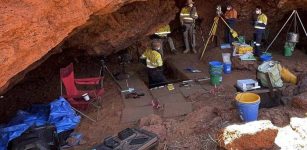 Artifacts Discovered At Yirra Confirm Aboriginal People Lived In Pilbara During The Last Ice Age
Archaeology | Apr 12, 2022
Artifacts Discovered At Yirra Confirm Aboriginal People Lived In Pilbara During The Last Ice Age
Archaeology | Apr 12, 2022

